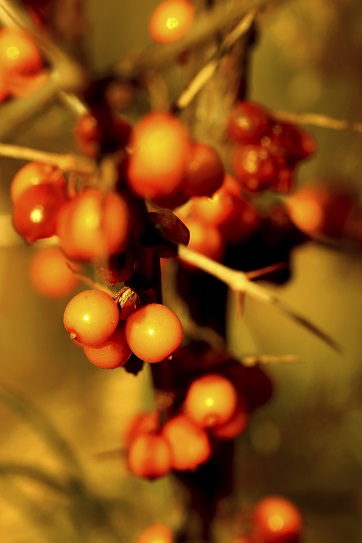 Natural topical treatments are by far the best bonus weapons for acne.
Natural topical treatments are by far the best bonus weapons for acne.
A clean and nutritious diet will clear the vast majority of your skin, but often, a treatment like honey or tea tree oil can be what finally wipes out your acne for good. In fact, natural topical treatments can lower pimple counts by 50% according to studies.
There’s an important choice to make though – do you use natural or chemical based ones? Common chemicals like benzoyl peroxide work; they can blast p.acnes bacteria into submission, but they also come with an array of side effects.
Natural creams, oils and substances, meanwhile, cause less harm and have a much broader variety of benefits like anti-inflammatory compounds, bonus nutrients, and antioxidants. A plant made in nature is more complex than anything built in a lab.
For that reason I always recommend that you stick to natural plants and oils for clearing acne topically. Read on, and discover the 7 greatest topical treatments for finally finishing your acne off.
Raw honey
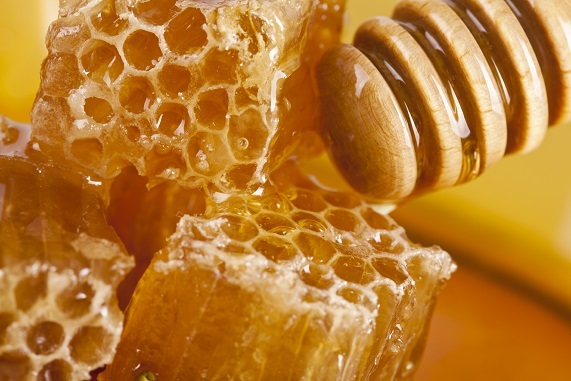 Powers – wipes out p.acnes bacteria. Has bonus anti-inflammatory and antioxidant properties.
Powers – wipes out p.acnes bacteria. Has bonus anti-inflammatory and antioxidant properties.
Best product (amazon link) – this Y.S. Eco Bee Farms Raw Honey.
Raw honey is easily one of the most famous folk remedies of all time. Raw honey has been used on wounds, allergies, and sore eyes by the Ancient Egyptians, Romans and Ancient Greeks.
Importantly for us, those powers are largely due to honey’s antibacterial properties. Raw honey is hence one of the very best topical treatments for reducing propionibacterium acnes (p.acnes), AKA the dreaded acne bacteria.
Honey has three famous antibacterial compounds. Firstly, there’s Methylgyloxal (MGO). MGO is so potent that manuka honeys from New Zealand are graded with a unique manuka factor (UMF) score.
Secondly, there’s hydrogen peroxide, which functions like a milder version of benzoyl peroxide. Finally, there’s a very recently discovered bee peptide called bee-defensin 1. This peptide is manufactured by the immune system of regular honeybees to kill bacteria and added to honey as they create it.
All three of these compounds in honey are extremely potent at killing bacteria, and that includes the p.acnes in your skin pores.
One study tested 26 different varieties of local honey from New Zealand, and concluded that each one had antibacterial properties. Every type of honey cleansed the wound and inhibited bacteria to some degree; the reductions in bacteria varied from 4% to 60%.
What’s more, honey still contains many secrets undiscovered by science. One study found that when the three main compounds were totally eliminated, honey still retained antibacterial properties.
The powers don’t end with killing p.acnes. Honey also has a good ORAC score of 270, meaning that it contains plenty of antioxidants. That should translate to your face when applied topically, and provide your skin with extra defences against air pollution, cigarette smoke, chlorine in swimming pools, and other toxins.
Read Annihilate Your Acne – get the diet that could transform your skin!
Honey even contains trace minerals such as vitamin C. In fact, honey is so rich in medicinal compounds and natural preservatives with potent powers that completely edible jars of ancient honey have been discovered in old Egyptian tombs, dating back as far as 3000 years.
Honey is so medicinally powerful that entire colonies of bees are kept alive on it. The smart acne patient takes advantage of that nutrition and keeps his skin nice and clear.
The best strategy – honey also succeeds due to its high versatility. If you want, you can use raw honey as a thinly spread face mask, for acne prevention. In my reckoning, however, honey functions best as a localised treatment to calm down particularly raging and red pimple.
The strategy is very easy. You can apply a small globule to each pimple, let it dry and go to bed for eight hours. The compounds will absorb into the epidermis and kill bacteria while you sleep.
As for the best product, never make the rookie mistake: you MUST buy your honey raw.
Pasteurised honey is not honey, it is honey-flavoured golden syrup. Heating raw honey to 72 degrees Celsius for approximately two minutes, which is the standard method, destroys all the acne-clearing enzymes, peptides and antioxidants.
Always use a raw honey, which can be identified from 1) a richer flavour, 2) a cloudier colour, and 3) being less runny. YS Eco Bee Farms (amazon link above) is excellent in terms of both quality and the bulk price.
Any side effects? – Only a tiny risk of a bee-product allergy.
Aloe vera
Powers – lowers inflammation and accelerates the healing of pimples.
Best product – this Seven Minerals Aloe Vera Gel (amazon link).
Aloe vera is second only to raw honey when it comes to historical medicinal usage. Cleopatra and Nefertiti of Ancient Egypt both adored the plant and utilised it in their beauty routines. The Native Americans, meanwhile, used aloe vera to ward off biting insects, while thousands of years ago, the Ancient Egyptian medicinal text Papyrus Eber stated that aloe vera had anti-inflammatory powers.
The history is highly promising for acne and the good news is that the science agrees. One study tested fresh aloe get directly on acne. A group of scientists led by Dr Z Hajheydari gathered 60 acne-prone patents and divided them into a control group and an aloe vera group.
Group A received a 0.05% topical retinoid cream (tretinoin) whereas group B received the exact same cream, except with added 50% concentration aloe vera gel.
As expected, both groups experienced a significant reduction in total acne lesions…
…but the aloe vera group had far greater improvements. The added aloe vera was the only difference between the two formulations; it had to be responsible.
What makes aloe vera so fantastic for acne? Aloe vera has two standout properties: an ability to accelerate wound healing and therefore clear old and dying pimples, and some potent anti-inflammatory properties.
Aloe vera contains a vast array of natural compounds. One is the enzyme bradykinase, which can break down the inflammatory chemical bradykinin when applied topically to skin. Another is c-glucosyl chromone, which has anti-inflammatory strength equal to widely prescribed catabolic steroids.
Next – the 6 best vitamins and minerals for naturally clear skin
Then there’s the yellow pigmented aloin, part of the anthraquinone family of antioxidants, which inhibits the pro-inflammatory master molecule COX-2. Finally, there’s lupeol, gibberellin, aloe-emodin, glucomannan, and probably many more. The compounds never end.
The takeaway is this – the anti-inflammatory properties of aloe vera are immense.
As for the wound healing, aloe vera contains two compounds called gibberellin and glucomannan which have been shown in studies to directly stimulate growth factors in the skin. This stimulation accelerates the formation of collagen, the skin’s main structural protein.
What’s more, aloe vera itself has also been demonstrated to increase collagen formation. Collagen is the main protein used to heal wounds and inflamed acne. Collagen even forms a structural matrix around which many other acne-clearing chemicals gather and venture out to do their healing work.
If you want to clear acne without harsh chemicals or pharmaceutical drugs then aloe vera is extremely hard to beat.
The strategy – pure aloe vera comes in a gel form, so like honey it is extremely convenient to use. Just apply and be patient; sleep until morning and hit the jackpot of clear skin the moment you wake up.
Once again, aloe vera is optimal for calming active and angry pimples. However by spreading a thin layer across your entire face you can accelerate the healing of all old acne.
Which is the best type of aloe vera? Don’t pick a grocery store product; it’ll be contaminated with fillers that don’t increase its ability to clear acne, but do increase inflammation. Instead, buy Seven Minerals Aloe Vera Gel (amazon link above).
Any side effects? – A few people report in with allergies.
Grapeseed oil
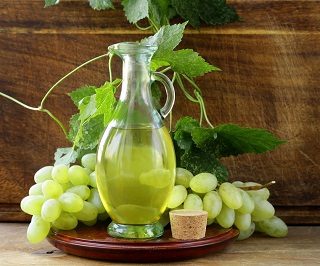 Powers – huge vitamin E content (ends clogged pores), linoleic acid, and moisturising.
Powers – huge vitamin E content (ends clogged pores), linoleic acid, and moisturising.
Best product (amazon link) – this Sky Organics Grapeseed Oil.
Grapeseed oil is a cooking oil extracted from the seeds of wine grapes, which is widely recommended as a health product. However, it really stands out for topical purposes, beating the likes of coconut oil and olive oil with ease.
Firstly, grapeseed oil is extremely rich in vitamin E. Many oils claim to be rich in vitamin E, but grapeseed oil actually is. 100 grams contains 144% of the RDA for vitamin E; spread this around your face and you’ll deliver tons of topical antioxidants.
Topically, regular plant antioxidants like those found in honey and witch hazel are important. However, vitamin C and vitamin E are also effective, as their powers when eaten will be delivered directly onto your face with extra high concentration.
Specifically, vitamin E is the most effective nutrient for preventing clogged skin pores. Both almond oil and olive oil contain comparable levels of vitamin E but contain far too much oleic acid. Grapeseed oil, meanwhile, contains little.
However, it does contain linoleic acid, and this is another benefit. Linoleic acid is one of the most promising new avenues of research in topical skincare.
Studies have detected lower than average concentrations of this fatty acid (also known as omega 6) in acne-prone skin. This is important because linoleic acid has many important roles. Linoleic acid has natural anti-microbial powers, constructs proteins in the skin called ceramides, and is part of your skin cells’ defences against UV radiation.
Roughly 69.6% of grapeseed oil’s total fats are linoleic acid. Interestingly, dietary linoleic acid does not correlate well with the content found in sebum. Therefore topical delivery is very important and grapeseed oil is a great way to achieve it.
Finally, grapeseed oil is a brilliant moisturiser. You might have heard that coconut oil, cocoa butter, and olive oil can also soften the skin. Why not use them instead? Because they’re all riddled with side effects. The former two have a comedogenic score of 4 out of 5 while olive oil can damage the human skin barrier.
Grapeseed oil meanwhile comes with a complete lack of side effects. Jojoba oil is also a great moisturiser for acne, but grapeseed oil contains far more vitamin E.
Out of traditional carrier oils, as opposed to distilled oils like tea tree oil, grapeseed oil is easily in the top two for acne.
The strategy – application could not be simpler. Spread the grapeseed oil around your face for maximum distribution of the vitamin E and maximum moisturising.
The complications come with the product you have to buy, but the strategy is still simple. Grapeseed oil must be purchased in its cold-pressed form; the factory refined version is exposed to harsh chemicals, which form by-products known as polycyclic aromatic hydrocarbons. PAHs are inflammatory and must be avoided.
You can get more information here, but the gist is that your grapeseed oil must be expeller-pressed, AKA cold-pressed. The grape seeds themselves should be dried by the sun, not factory machinery. Organic is also preferable.
All of these requirements can be found within Sky Organics Grapeseed Oil (amazon link above). The grapeseed oil market is particularly fraught with risks, with chemically blasted products being everywhere compared to the likes of shea butter or argan oil, but this product is officially certified organic.
Side effects – a very small risk of clogging skin pores, which rarely occurs.
Sea buckthorn oil
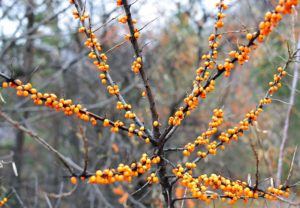 Powers – improves oily skin, reduces skin’s sensitivity to testosterone and DHT.
Powers – improves oily skin, reduces skin’s sensitivity to testosterone and DHT.
Best product (amazon link) – it must be the berry oil; hence this US Organic Sea Buckthorn Berry Oil is optimal and fairly cheap.
Remember when I said that grapeseed oil was in the top two topical oils for human skin? Well sea buckthorn oil is the other one, and it attacks acne from a completely different direction.
Specifically, by ending oily skin – sea buckthorn oil can reduce sebum production by up to 45%.
In this 2010 study, scientists gathered 10 males with a history of acne. A split-face experiment was performed, where each patient applied a placebo treatment to one side of their face and the same mixture with added sea buckhorn oil to the other. Measurements of sebum production, irritation, and softness were all taken 1, 2, 3, 4, 6 and 8 weeks after the study began.
The longer the men used the sea buckhorn oil on their skin, the less and less oily their skin became.
After 1 week the decline in sebum production was 17%, after two weeks the decline was 18%. Finally, after 8 weeks, the patients had 45% lower sebum production than they did originally.
Meanwhile, the placebo side of the face demonstrated no improvement. In fact the oiliness went up to 15% above baseline after three weeks, and was still at 12% above baseline after six weeks.
The scientists theorised that the high vitamin A content (witness the orange colour) of sea buckthorn oil was down to the benefits. Topical retinoids work by slashing sebum production after all. However, sea buckthorn oil also contains two anti-androgen compounds known as beta-sitosterol and stigmasterol.
Androgens such as DHT and testosterone stimulate the sebaceous glands; these two compounds bind to receptors and counteract it. Hence sea buckthorn oil can as well, making it particularly useful for athletes and bodybuilders.
What’s more, in the study above sea buckthorn led to significantly increased “soft and shine” of the skin as well. The scientists didn’t particularly care, and attributed the benefit to the fatty acids. However, this means that like with grapeseed oil, you’ll get a bunch of moisturising powers as an extra on top of the improvement in oily skin.
For all those reasons, sea buckhorn oil is a truly exceptional topical acne treatment. The results were rapid, occurring after one week, but got better and better as time went on.
The strategy – mimic the methods used in the study. Apply a thin layer of sea buckthorn oil to your entire face, and leave the compounds to work their magic.
Again, buying the correct product is more important. Here you have to purchase sea buckthorn berry oil and completely ignore sea buckthorn seed oil. The study was conducted on berry oil and that’s where the beneficial nutrition is found.
The berry oil is extracted from the flesh of the berry itself; it is unmissable thanks to its richer colour. The seed oil is more orange, like sunflower oil or any supermarket oil. If you’re wondering what the sea buckthorn berry is, it’s an orange berry which grows in the Himalaya. Nepali villagers often blend it into a smoothie to sell to passing mountaineers on the trek to Everest; Himalayan brown bears are also fans apparently.
The best inexpensive product around is US Organic Sea Buckthorn Berry Oil (amazon link above). Watch out – this might stain, so leave it on overnight like with honey.
Side effects – none are known. What’s more, the scientists stated in the study that none were observed.
Tea tree oil
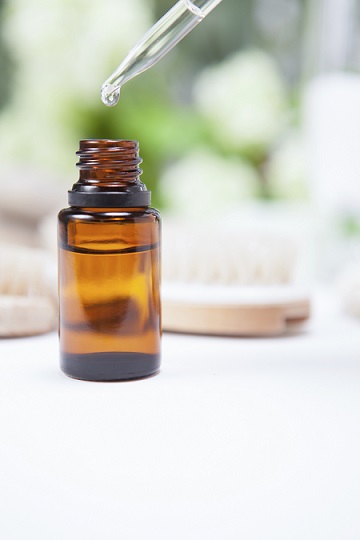 Powers – highly antibacterial and anti-inflammatory.
Powers – highly antibacterial and anti-inflammatory.
Best product (amazon link) – this steam-distilled Eden’s Garden Tea Tree Oil.
Tea tree oil has been used by Australian aboriginals in a paste form for dressing wounds for centuries. Why?
Because it is extremely effective at killing bacteria. Unlike raw honey and aloe vera, tea tree oil has one standout compound – terpinen-4-ol. This is an alcohol compound which is known to annihilate a broad spectrum of bacterial strains…
…and the best part for us is that terpinen-4-ol was directly shown to kill p.acnes bacteria in one study. By extension that should make tea tree oil a pimple-calming miracle.
What’s more, tea tree oil has a few minor compounds with extra antibacterial strength, including alpha-terpineol and alpha-pinene. The ability to disinfect wounds used throughout history is more evidence of antibacterial action. Tea tree oil is also used in folklore to treat ringworm and athlete’s foot, which are notorious bacterial infections.
Next to wiping out p.acnes bacteria we have tea tree oil’s strong anti-inflammatory properties. Once again, terpineol-4-ol is the miracle substance; this study found that it could inhibit localised inflammatory responses on the skin by 50% after 40 hours of exposure.
Another tea tree oil compound called a-terpineol was analysed but T4O had it beat. Terpinen-4-ol was able to reduce a broad spectrum of inflammatory chemicals including TNF alpha and IL-1beta, both of which are strongly linked to acne.
A more recent 2014 study analysed two components of tea tree oil, terpinen-4-ol and alpha terpineol. This time, the pro-inflammatory chemicals IL-1β and IL-6 were inhibited.
Last but not least, tea tree oil has an extra ability to kill the most controversial villain in the acne world: demodex mites.
Demodex mites are microscopic insects which live on the surface of the skin of nearly every adult human. However, humans with skin conditions such as rosacea have significantly more colonies than average. It’s for that reason that many health gurus believe that demodex mites are the true cause of acne.
The truth? Demodex mites are not pure evil like corners of the internet suggest, but overgrowths do have a minor link to heightened inflammation. Tea tree oil is one of the most effective topical treatments for wiping out these mites, so if you have a mite overgrowth and fail to realise it, that’s yet another point in tea tree oil’s favour.
If your goal is to kill p.acnes bacteria while simultaneously calming the inflammation and redness caused by that bacteria, then tea tree oil is the acne treatment for you.
The strategy – one warning however: a separate alcohol compound called 8-cineol has a strong track record of causing irritation and redness in some users.
This isn’t a case of “there could be an irritant we haven’t identified”, like with witch hazel; some acne patients have reported in with blisters and rashes. 8-cineol has been confirmed as a skin irritant in scientific studies.
Hence, we come to the ideal tea tree oil strategy: use this treatment as a tool for calming individual red and inflamed patches of acne.
Don’t apply tea tree oil to your entire skin as a toner, and only use a small quantity. A 5% tea tree oil distillation will provide enough strength to clear acne while minimising the irritating side effects.
There’s several other strategies for maximum benefit: Australia sells the best formulated tea tree oil products, dark bottles are most effective as they block sunlight, which can oxidise the valuable compounds. Get a product with a relatively high concentration of terpinen-4-ol on the bottle; over 15% is ideal.
Fulfil those requirements and tea tree oil could be an absolute miracle. An excellent product for acne which meets every requirement is Eden’s Garden Tea Tree Oil (amazon link above), being steam distilled and free from toxic chemicals like hexane.
Witch hazel
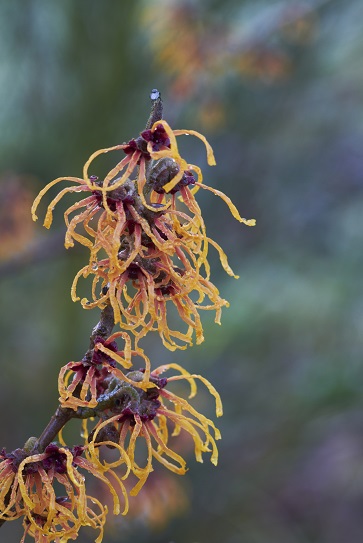 Powers – a colossal antioxidant count, anti-inflammatory compounds.
Powers – a colossal antioxidant count, anti-inflammatory compounds.
Best product (amazon link) – the excellent and alcohol free Thayers Unscented Witch Hazel Formula.
Witch hazel is yet another plant with a storied medicinal history, but it’s only in the last 25 years that astonishing study after astonishing study has been revealed for acne.
The main benefit is the witch hazel plant’s high antioxidant count, which are particularly concentrated in the bark and leaves. Witch hazel contains a huge 10% tannins by weight. Tannins are a potent class of antioxidants which give foods like raspberries their power.
Witch hazel has antioxidant powers equal to superoxide dismutase, one of the most powerful and common antioxidants the human body manufactures itself. Witch hazel antioxidants even have a particularly high affinity for human skin cells.
One study found that witch hazel extracts had a synergistic effect with vitamin E, enhancing its power. Vitamin E is the best nutrient for controlling clogged pores.
The families and classes of antioxidants in witch hazel are endless. They include gallic acid, catechins, proanthocyanins, kaempferol, quercetin, carvacrol, eugenol, hexenol, choline and saponins.
The witch hazel plant also has well-established anti-inflammatory properties. In one study scientists deliberately inflamed human skin by applying sodium lauryl sulfate (SLS). SLS is a controversial ingredient of commercial shampoos, which countless users insist gives them a reddened and irritated scalp.
Witch hazel was able to reverse all the inflammation from SLS. Its anti-inflammatory properties were equal to the widely prescribed pharmaceutical drug hydrocortisone. The connection to acne? Inflammation is the number one cause of it.
Yet another promising power is the inhibition of sun damage from UVB radiation. You might not realise that moderate sun exposure is vital for healthy skin. Sunlight stimulates the creation of vitamin D3, creates a burst of antibacterial nitric oxide directly on impact with your face, and boosts your mood by increasing endorphins.
The problems for acne like free radicals only kick in after prolonged exposure. However, those problems are still a threat. If you fail to nourish your skin with the proper nutrition then your acne can be a lot more prone to inflammation from UVB rays than average.
That’s where witch hazel steps in. One study found that applying witch hazel could suppress sunburn by 20% after 7 hours. After 48 hours, the sunburn was prevented by 27%.
Through a combination of antioxidants, anti-inflammatory compounds, and other substances, witch hazel can act as a natural sunscreen.
Honey stands out as an antibacterial powerhouse. Aloe vera is the enemy of inflammation. Witch hazel meanwhile, is the ultimate topical treatment for antioxidants.
Witch hazel is also antibacterial (click here for an extensive analysis), but is especially excellent if you need to drench your skin with antioxidants.
The strategy – witch hazel is liquid based. Hence it’s a great treatment for applying to the whole face with a cotton bud; you want to spread the antioxidants everywhere.
Zinc – the number one mineral for clear skin (reduces acne by 49.8%)
Witch hazel is ideal if you need to drench your skin with antioxidants for any reason. That could be if you 1) are a daily cigarette smoker, 2) live in a polluted city, 3) use make-up constantly, 4) eat lots of processed food, or 5) swim regularly in a chlorine pool.
The golden rule is this – the oilier your skin is, the more antioxidants you need to keep that oil from clogging your pores.
Stay on your toes as well, because most witch hazel distillations contain alcohol. Many acne patients have reported burning and itching from alcohol-containing treatments.
Hence, you need a purer version. Thayers Unscented Witch Hazel Formula (amazon link above) is alcohol free and one of the standout products available. Also, the link is set to unscented, but you can flip to a lavender or cucumber scent if you desire.
Any side effects – very few known of. May cause allergies in some.
Green tea
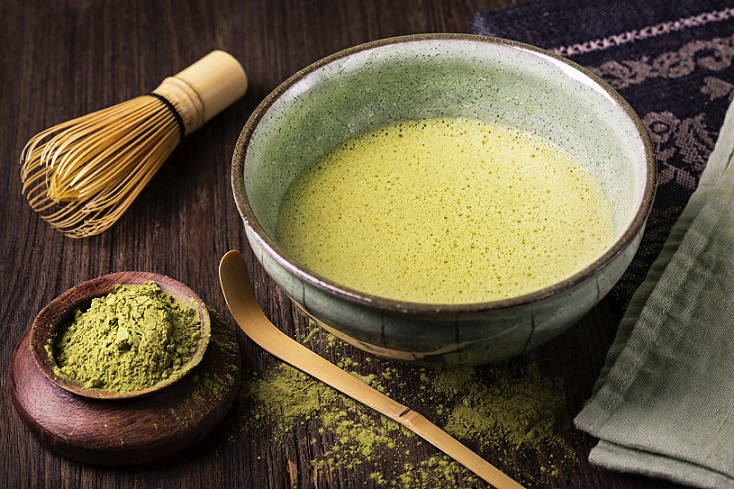 Its standout properties – tackling oily skin and hence clogged pores.
Its standout properties – tackling oily skin and hence clogged pores.
Best product (amazon link) – the pure Swanson’s Green Tea Leaf distillation.
Next we have green tea, nothing more than the common beverage drunk by millions of people worldwide. In short, green tea has a proven ability to reduce oily skin.
The greatness of basic green tea was established in two clear studies. Firstly, there’s a study where scientists gathered 49 volunteers in an Iraqi clinic.
24 of the patients were instructed to douse their face with a 2% green tea distillation and do so for 12 weeks daily, whereas 25 were instructed to use distilled water. Each patient had acne levels ranging from severe to moderate.
The results were outstanding for a food item as commonplace as green tea. The 24-strong clear skin group who used distilled water enjoyed only a slight reduction in acne, possibly due to natural day-to-day variations in pimple counts.
Meanwhile, the green tea group experienced an average of a 57% reduction in overall pimple counts. Some members were probably as high as 65%.
Later scientists sought to identify the mechanism, and they did so in earnest. In this study, which was conducted in Pakistan, 10 patients were assigned a 3% concentration green tea product and told to apply it daily. They kept up the regimen for 8 weeks and reported in for a skin biopsy 1 week, 2 weeks, 4 weeks, 6 weeks, and finally 8 weeks after they begun.
The results were again excellent. Average sebum (oil) production began to fall by week 1; there was an 8% reduction. By week 2, the reduction had intensified to 15%. By week 4 it was 35%, by week 6 it was 45%.
Finally, after 8 weeks of daily green tea application, total sebum production on the acne patients’ skin had fallen by an average of 60%.
That was just the average as well; the highest reported decrease could have been 70%.
Here we have a clear mechanism for green tea’s greatness. Green tea lowers sebum production, prevents the formation of clogged pores, robs p.acnes bacteria of a low oxygen, sebum clogged environment to call home, and cuts the head of the acne-causing snake before it ever arrives.
The trail of evidence is clear. Green tea is not only one of the greatest natural acne treatments, but one of the most effective topical acne treatments full-stop.
Another study showed that daily application of green tea reduced acne lesions by 51% after 8 weeks. Another showed a reduction in sebum production due to inhibiting the activity of IGF-1 hormones.
Get the eBook – learn why eating fish can improve acne by 42%
Green tea functions due to its catechin antioxidants, most notably epigallocatechin gallate (EGCG). ECGC binds to androgen receptors on the skin and strongly inhibits their activity.
In fact, ECGC is believed to have antioxidant properties 25 to 100 times more powerful than vitamin C. It doesn’t end there, the leaves also contain antioxidants like epicatechin (EC), epigallocatechin (EGC), epicatechin gallate (ECG), kaempferol, quercetin, and myricetin.
The strategy – apply green tea across your whole face. The idea is to prevent sebum production; if you want the complete effect the ECGC has to penetrate everywhere.
The exception is if your forehead or chin is particularly rich in pimples. In that case you might not care about reducing the oil anywhere else.
Which is the best type of green tea? A good product right now is Swanson’s Green Tea Liquid (amazon link above).
Hopefully, as the research spreads, the market will explode. The pharmaceutical industry would be pretty foolish to ignore such an excellent opportunity, particularly with such an everyday foodstuff.
Any side effects? – May contain fluoride, a toxic chemical I’ve previously warned against, but levels are generally tiny.
Conclusion
There’s millions of plants growing on planet earth and thousands of plants which could clear acne when applied topically. In all likelihood, there’s one monstrously nutritious flower or shrub growing in a rainforest somewhere which would wipe the floor with all of these, a plant which we haven’t stumbled across and perhaps never will.
But for now, those seven natural treatments are the best of the best and cover nearly all the bases. Honey is antibacterial, witch hazel provides antioxidants, green tea tackles oily skin, tea tree oil is anti-inflammatory.
Aloe vera accelerates collagen production, sea buckthorn oil provides vitamin A, and grapeseed oil gives you both vitamin E and linoleic acid. All are extremely different angles of attack.
If you’re very poor or otherwise looking to save money, raw honey is easily your best choice as the bulk tub linked above is a massive 22oz. That will last you for ages. If the products above are all affordable to you, then the choice is yours.
NEXT: discover the root causes of acne and banish your pimples forever
Thanks for reading!
